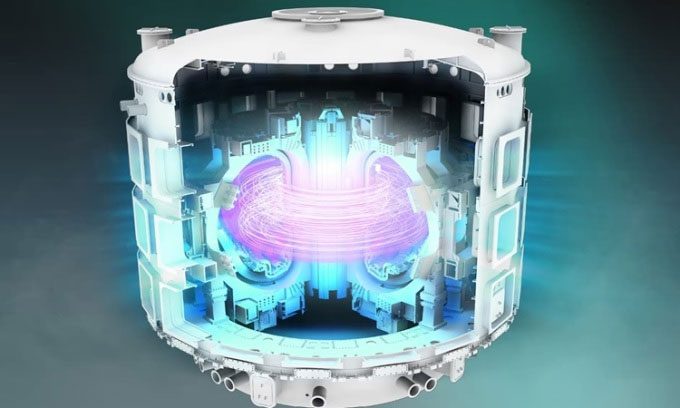The ITER project, uniting 35 countries to create limitless clean energy, is on track to become the most delayed and cost-inflated project in history.
Researchers will employ the world’s most advanced technology to design a machine capable of fusing atoms, mimicking the energy production processes of stars, thereby generating low-cost, non-polluting energy. This is the goal of the International Thermonuclear Experimental Reactor (ITER), a collaboration among 35 nations, including many European countries, China, Russia, and the United States, being constructed in Saint-Paul-lez-Durance in southern France, with an initial cost of $6 billion. Construction commenced in 2010 with a commitment to achieve energy-producing reactions by 2020, according to The Guardian.

The tokamak reactor of ITER was originally scheduled to begin operations in 2020. (Photo: ITER).
However, the reality is starkly different. Rising costs, the COVID-19 pandemic, deterioration of key components, last-minute redesigns, and challenges in meeting nuclear safety regulations have caused numerous delays, making ITER unlikely to be operational for another decade. Worse yet, the nuclear fusion energy reaction is not expected to occur until 2039, while the ITER project budget has already soared to $20 billion and is projected to increase by another $5 billion.
Other estimates suggest that the final costs will far exceed this figure, turning ITER into an “exceptionally delayed and cost-inflated scientific project in history,” as warned by Scientific American. The journal Science concluded that ITER is facing “serious troubles,” while Nature noted that the project is “drowning in a series of delays, escalating costs, and management issues.” Today, dozens of private companies are promising to develop fusion reactors within shorter timelines, including Tokamak Energy in Oxford and Commonwealth Fusion Systems in the United States.
“The issue is that ITER has been ongoing for so long and has faced so many delays that the world has moved on,” said nuclear expert Robbie Scott from the UK Science and Technology Coordination Council. “A multitude of new technologies have emerged since ITER was first planned. This has made the project genuinely problematic.”
A pressing question associated with the world’s most ambitious technological project is the effort to harness the process that powers stars. This process involves the nuclear fusion of two light atoms to create a heavier nucleus, releasing massive amounts of energy. This fusion reaction only occurs at extremely high temperatures. To generate such heat, the ring-shaped tokamak reactor will use magnetic fields to confine hydrogen plasma, which is then bombarded with particle beams and microwaves. When temperatures reach millions of degrees Celsius, a mixture of two hydrogen isotopes, deuterium and tritium, will fuse into helium, neutrons, and release surplus energy.
Confining plasma at such high temperatures is extremely challenging. The initial plan was to coat the tokamak walls with beryllium, but this approach proved complicated. The compound is quite toxic, and ultimately engineers decided to replace it with tungsten. This was a significant design change made very late in the process, according to David Armstrong, a professor of materials science and engineering at the University of Oxford.
Next, massive components of the tokamak produced in South Korea did not fit together perfectly. The threat of radioactive material leaks forced nuclear regulators to halt construction. More delays occurred as issues compounded, followed by the COVID-19 pandemic, which led to factory shutdowns for parts supply, reduced labor availability, and resulting impacts such as transportation bottlenecks and quality control challenges, acknowledged Pietro Barabaschi, the ITER project director. As a result, ITER has again postponed its completion timeline to the next decade.
Simultaneously, researchers using alternative methods to achieve nuclear fusion have made significant progress. In 2022, the National Ignition Facility in California used lasers to heat deuterium and tritium, fusing them to create helium and surplus energy. Other fusion projects have also reported that they could achieve breakthroughs soon. The challenge for ITER is whether the project can overcome its crises and if funders will continue to provide financial support. ITER representatives deny that the project is facing “serious troubles” and reject the conclusion that it is a record-breaking scientific project in terms of cost overruns and delays.



















































